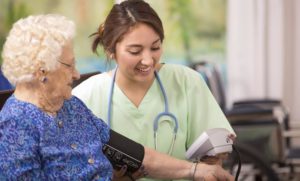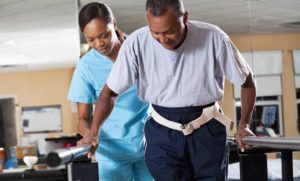Find out if a career in practical nursing is right for you
Have you thought about a career in healthcare, perhaps one that involved direct patient care?
If you enjoy helping people and working in a collaborative environment, practical nursing might be a good career option for you.
Read on to find out what a typical day in practical nursing is like, including the types of duties and responsibilities involved, and examples of work settings for practical nursing positions.
Practical nursing tasks
Licensed practical nurses perform a variety of tasks under the direction of a physician, including basic bedside care and monitoring patients’ vital signs. They also are responsible for drawing blood and routine laboratory tests.
Practical nursing duties, depending on the work setting, can also involve direct patient care, including:
- Wound care
- Insertion and removal of urinary catheters
- Starting IVs for adult patients
- Feeding and caring for infants (as a pediatric practical nurse)
- Administering medication
- Monitoring of medications and treatments (for any adverse reactions)
Licensed practical nurses typically work an 8- to 12-hour shift, depending on their job location, and will usually begin their shift by consulting with the nurse on duty to discuss the status of patients under their care and the medication that will be administered that day. These consultations will also include reviewing physician’s reports and receiving instructions on any laboratory tests or samples that will need to be collected from patients during the shift. Licensed practical nurses typically report to a registered nurse or physician during their shift, but may also be responsible for supervising nursing assistants or aides.
As a licensed practical nurse, you will also have significant interaction with patients and their family members, discussing their medical care and listening to their concerns. Practical nursing duties include providing instruction to family members on how to care for their loved ones, once they are discharged from the hospital or other medical facility.
A significant part of practical nursing duties also includes documenting patient vital signs, insurance paperwork, preparing status updates and reports on patients, and other administrative tasks.
Practical nursing job settings and job outlook
There are a number of workplace locations for practical nursing positions, including hospitals, nursing homes, clinics, home health care center, and hospice facilities.
The job outlook for licensed practical nursing positions is strong, with a projected employment growth of 12 percent from 2016 to 2026. As more people are living longer, there are increased demands being placed in the healthcare arena, and practical nursing positions will be vital to fill this need for care.
The Practical Nurse program at Professional Skills Institute can provide you with the tools and education to prepare you for a practical nursing career, combining classroom education in medical terminology, anatomy, physiology and pharmacology with hands-on training. The program also includes clinical training in actual medical facilities to provide on-the-job skills training needed in the healthcare field.
To learn more about our Practical Nurse program, visit Proskills.edu to schedule a campus visit or call 800-216-5770.




